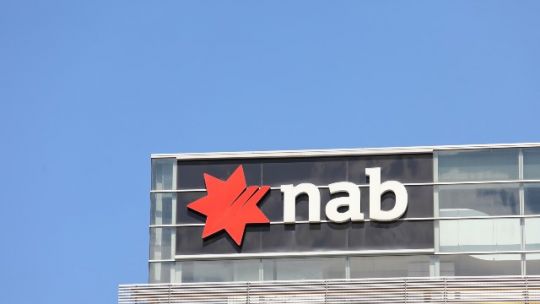86 400 set to merge with UBank: What will it mean for customers?

Neobank 86 400 could be joining the NAB empire by merging with UBank in mid-2021, if shareholders and regulators approve the deal. If you bank with 86 400, you might be wondering what to expect next, from the practicalities of everyday banking to your savings or home loan interest rate.
It was announced on Friday that 86 400 is set to combine with UBank, the digital-only subsidiary of one of Australia’s four largest banks – National Australia Bank (NAB).
The banks say the move is designed to “accelerate growth”, with 86 400 saying NAB’s backing would allow it to boost customer numbers and its balance sheet in a way that would have otherwise taken five years.
The neobank currently has over 85,000 Australian lending and deposit customers who hold $357 million in deposits, $270 million in approved residential mortgages, as well as relationships with 2,500 accredited mortgage brokers. UBank has more than 600,000 customers but no brokers on its books, and NAB around 9 million customers.
At this stage it’s important to note the merger is still dependent upon approval by an array of stakeholders, including shareholders and regulators. The Treasurer, the Federal Court, as well as the Australian Prudential Regulation Authority (APRA) and the Australian Competition and Consumer Commission (ACCC) will all have to weigh in.
Both NAB and 86 400 have said they expect this process to be wrapped up by about the middle of 2021.
What happens next for 86 400 customers?
86 400 customers have been told to expect no day-to-day changes and to continue use their app, card and digital wallet normally. That’s the case for now, anyway.
CEO Robert Bell said it would be business as usual for “some time” and suggested 86 400 would continue to operate as a separate business over the next few months.
But looking forward, Canstar finance expert Steve Mickenbecker said it can be hard for big banks to support multiple brands.
“It’s difficult to imagine the 86 400 brand existing in the long term,” he said. “But I wouldn’t expect any early disruption for 86 400 customers.”
He said this news didn’t change anything for savvy banking customers, who should always be looking for a decent deal on interest rates and suitable features in their banking products.
“They would not want to see themselves offered a NAB savings interest rate of 0.40% or 0.45%, for instance, but the top savings rate at UBank of 1.10% is not so out of line with what customers at banks like 86 400 have become used to,” he said.
Elsewhere today, NAB announced a savings account interest rate cut for its customers, while UBank introduced what is currently the lowest home loan interest rate on Canstar’s database last Friday.
What about competition in banking? Is this good news for customers?
Mr Mickenbecker said the whole point of neobanks being introduced in Australia starting around three years ago was to encourage innovation and greater competition in banking that would benefit Australian consumers.
He added that while this move will potentially reward the innovators behind 86 400 and their backers, there could be implications for competition.
“Right from the advent of neobanks, one of the ways investors were likely to get a payback on their investment was through an acquisition by one of the big banks, and now it’s happened,” Mr Mickenbecker said.
“It’s come earlier than we thought and it would not be what APRA had in mind when it helped introduce the concept of neobanks by adjusting its licensing rules.”
The news of the merger also comes shortly after what Mr Mickenbecker calls the “NAB mop up” of savings accounts at Xinja after the neobank recently surrendered its banking licence and closed customers’ accounts, citing financial difficulties exacerbated by the pandemic.
“In the end, Xinja was left with a very small amount of savers who did not contact them and say ‘do this with our money’ so NAB filled the void and took over the accounts,” he said.
“I’m sure those ex-Xinja savers would prefer to be getting UBank- or 86 400-style bonus savings rates of 1.10% or 1.20% over NAB’s top savings rate of 0.45%.”
The comparison rate for all home loans and loans secured against real property are based on secured credit of $150,000 and a term of 25 years.
^WARNING: This comparison rate is true only for the examples given and may not include all fees and charges. Different terms, fees or other loan amounts might result in a different comparison rate.

Up to $4,000 when you take out a IMB home loan. Minimum loan amounts and LVR restrictions apply. Offer available until further notice. See provider website for full details. Exclusions, terms and conditions apply.
 Owner occupied
Owner occupied
 20% min deposit
20% min deposit
 Redraw facility
Redraw facility
 Owner occupied
Owner occupied
 20% min deposit
20% min deposit
 Redraw facility
Redraw facility
 Owner occupied
Owner occupied
 10% min deposit
10% min deposit
 Redraw facility
Redraw facility
 Owner occupied
Owner occupied
 20% min deposit
20% min deposit
 Redraw facility
Redraw facility
Canstar may earn a fee for referrals from its website tables, and from Sponsorship or Promotion of certain products. Fees payable by product providers for referrals and Sponsorship or Promotion may vary between providers, website position, and revenue model. Sponsorship or Promotion fees may be higher than referral fees. Sponsored or Promoted products are clearly disclosed as such on website pages. They may appear in a number of areas of the website such as in comparison tables, on hub pages and in articles. Sponsored or Promoted products may be displayed in a fixed position in a table, regardless of the product’s rating, price or other attributes. The table position of a Sponsored or Promoted product does not indicate any ranking or rating by Canstar. For more information please see How We Get Paid.
This article was reviewed by our Sub Editor Tom Letts before it was updated, as part of our fact-checking process.

The comparison rate for all home loans and loans secured against real property are based on secured credit of $150,000 and a term of 25 years.
^WARNING: This comparison rate is true only for the examples given and may not include all fees and charges. Different terms, fees or other loan amounts might result in a different comparison rate.
 Owner occupied
Owner occupied
 40% min deposit
40% min deposit
 Redraw facility
Redraw facility
Try our Home Loans comparison tool to instantly compare Canstar expert rated options.
The comparison rate for all home loans and loans secured against real property are based on secured credit of $150,000 and a term of 25 years.
^WARNING: This comparison rate is true only for the examples given and may not include all fees and charges. Different terms, fees or other loan amounts might result in a different comparison rate.






